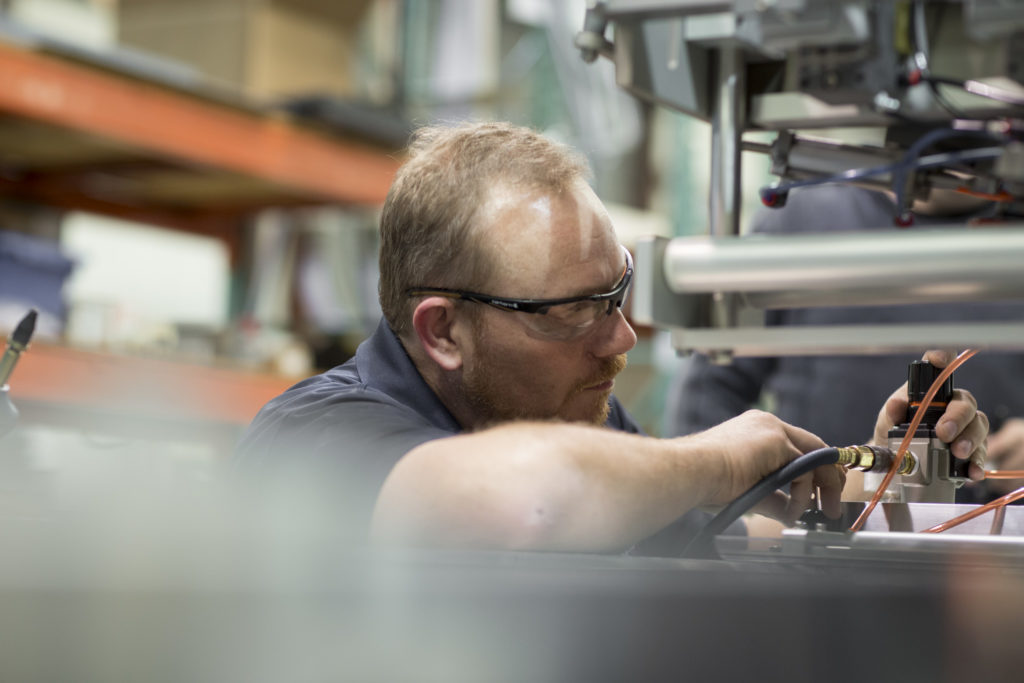Every manufacturer brings a certain degree of innovation into their products. But in today’s competitive landscape, OEMs need more than that to separate themselves from competitors. A trend we’ve been monitoring in the past several years are companies seeking a higher level of application expertise and other attributes from their OEM suppliers. Of course, the overall quality of equipment, along with price, are still two dominant factors in the purchasing decision.
However, there’s a shift going on within the meat and poultry industries. Customers are adding weight to their decision-making process on the intangibles that suppliers bring both before and after the sale, such as do they have the infrastructure in place to be a single-source supplier? Other factors include application expertise, training, the overall level of customer service, factory acceptance testing, preventive maintenance, on-site service and parts. In other words, customers want much more from their OEM supplier than just their product innovation.

Image Problem?
There are a couple reasons why this shift in supplier evaluation is occurring, and it starts with employees…or the dwindling supply of them. As many baby boomers continue to retire, they’re taking with them years of tribal knowledge, which isn’t easy to replace. As those folks walk out the door, there doesn’t seem to be enough skilled replacements walking in. According to the Bureau of Labor Statistics, there were more than 500,000 open jobs in manufacturing as of August 2018. And that figure is estimated to grow as high as 2.4 million unfilled jobs by 2028, according to research by Deloitte and The Manufacturing Institute.
Not surprising, open jobs in packaging follow this trend as well. The Packaging School estimates there are currently about 123,000 unfilled jobs in the packaging industry in the U.S., which also includes food packaging. Of that figure, about 6,400 of those jobs pay $90,000 or more. There are reasons for this gap. Packaging in general suffers from an image problem; it’s not viewed as a “sexy” industry and as such, it isn’t on the radar of many young people. Combining this image problem with the retirement of older workers creates the skills gap, which is a difficult obstacle among end-user companies as they look to maintain or speed up production, but do so with a smaller, less-experienced workforce.
The food manufacturing sector is taking steps to address the workforce issue. Some major companies have pledged to foster an environment that places the needs and personal growth of its employees front and center.
According to a 2020 dissertation titled, The Influence of Socialization, Family and Sex on Newcomer Outcomes in a Dirty Work Context by Delia Adriana Ruiz Munoz of the University of North Carolina – Charlotte, “The two biggest meat manufacturing companies in the world include on the mission statement their commitment to create value for their team members, and the willingness to provide a better future for their entire team.”
Stepping Up to The Challenge
In response to the labor shortage seen with the food manufacturing industry, suppliers are being asked to expand their capabilities and network of resources to become more of a single-source supplier. While meeting those dual needs can be a challenge, those suppliers who are positioned well within the food packaging industry, it can be a win-win for both themselves and their end-user customers.
The consolidation within the food industry in the past several years saw the elimination of jobs as companies looked to avoid duplicating services and operate leaner. This, in part, fuel the drive for OEMs to expand their resources and adapt to become a one-stop shop for their customers. In essence, what they’ve been hearing is, “We want to partner with OEMs that not only bring the best in product innovation, but have the network of related brands they can turn to on our behalf.”
The OEM suppliers who have the necessary partners in place can consultatively advise those packaging companies with sound recommendations. Often, suppliers can evaluate the entire packaging line and identify other areas where efficiencies can be gained. This is where the more reputable suppliers demonstrate their value, and also rely on established industry partners to engineer a packaging line solution geared toward getting the job done the right way. This route allows a supplier to counsel on all facets of the project under a single roof, creating one point-of-contact for end-user companies.
We see no reason for this trend to slow anytime soon. For OEM suppliers to not only survive, but thrive in this environment, they have to step up their game and bring more to the table. The industry is relying on suppliers and their resources more than ever before – and that’s a great opportunity to embrace.
Subscribe to our email list for the latest in flexible packaging news.
Post contribution:
Jason Angel is vice president of sales and marketing at Ossid.

Ossid provides superior tray overwrapping, flow wrapping, weigh price labeling, case scales, and horizontal thermoform fill & seal machinery. We are committed to designing and building solutions that protect product quality and fully meet our customers’ production needs.
